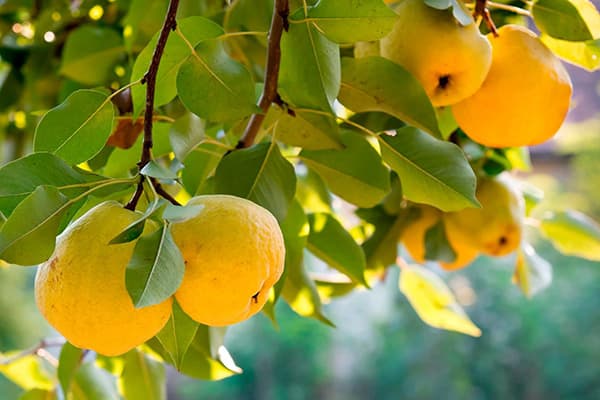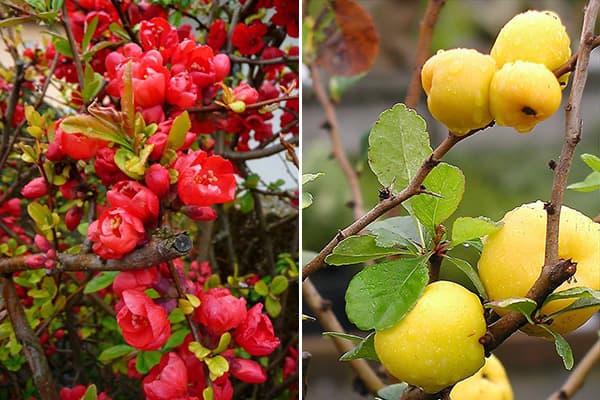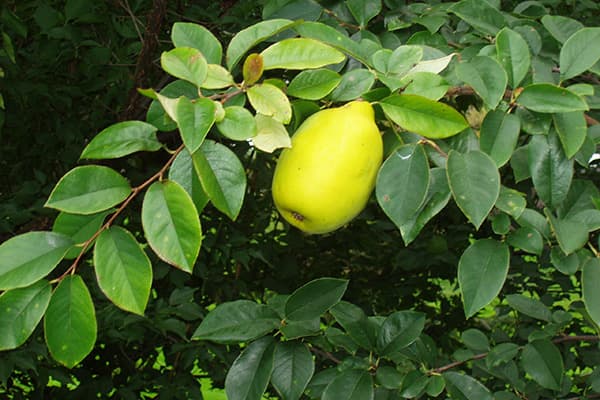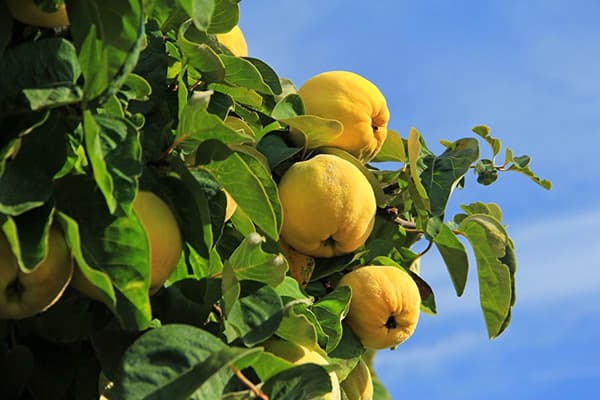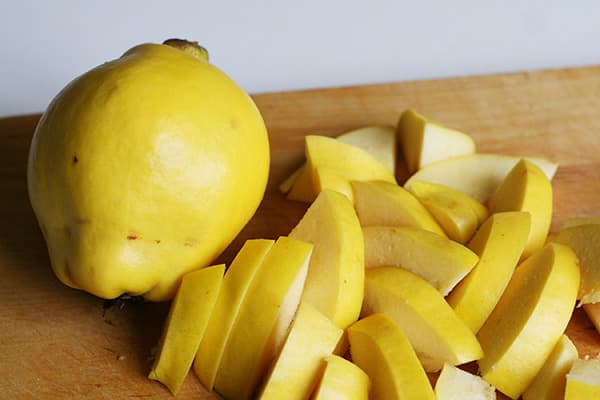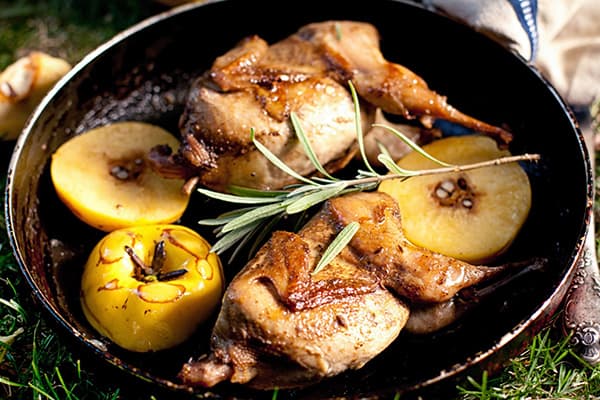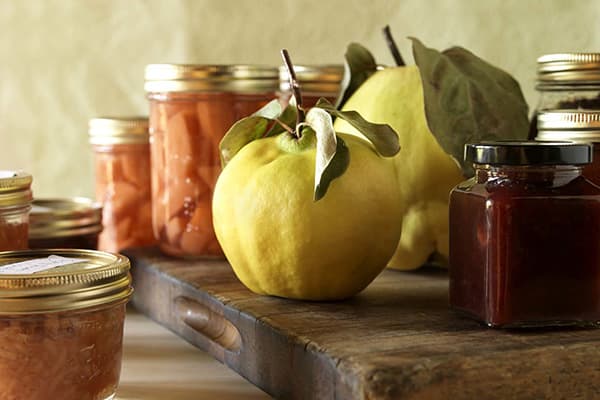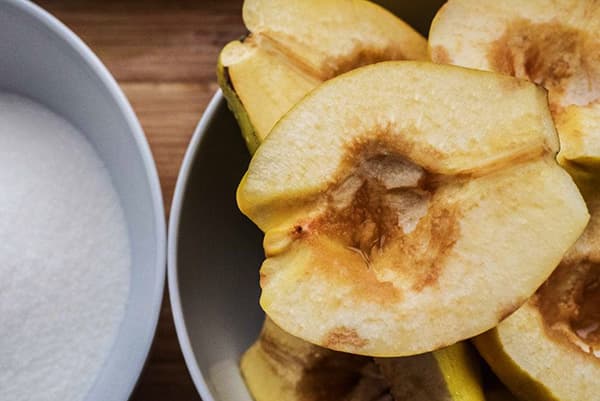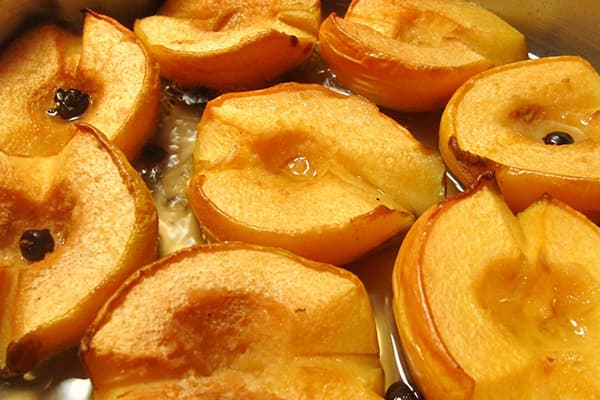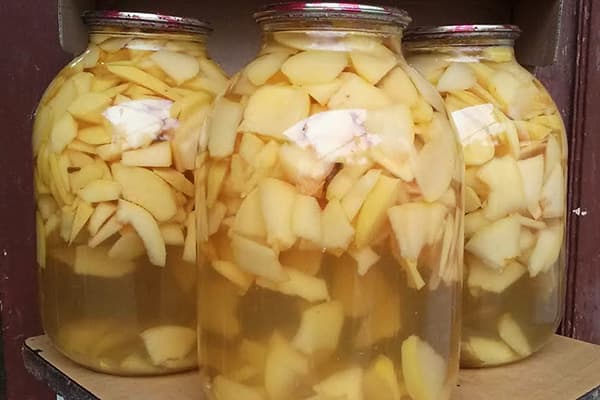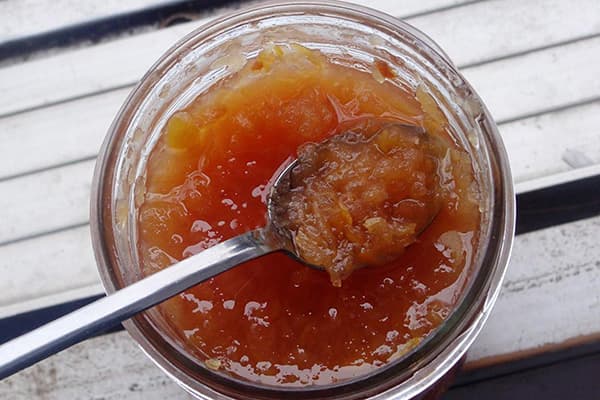The ideal companion for meat: quince and its role in maintaining health
Content:
- Where does quince grow and what does quince look like?
- Description of different types of quince
- Japonica
- Chinese quince
- Quince lemon
- Calorie content and chemical composition
- The health benefits of quince - 11 healing properties
- Harm and contraindications
- What to cook from quince?
- Baked quince
- Quince compote
- Quince jam
Quince has been on sale since mid-autumn, the useful properties of which were known to the ancient Greeks and Romans. Outwardly, the fruits of this plant resemble large yellow apples or pears. The inhabitants of the Mediterranean considered the fruit a symbol of love and dedicated it to the beautiful goddess Venus. We will tell you what benefits quince can bring to your health and how to use it correctly.
Where does quince grow and what does quince look like?
Quince (Cydonia oblonga, Cydonia vulgaris) is a bush plant of the Pink family. It has been known to mankind for over 4 thousand years. Most scientists call the Caucasus the birthplace of cydonia. From there, a shrub with bright yellow fruits fell into Asia Minor, Ancient Rome and Greece. For a long time, Europeans considered the plant inedible and cultivated for decorative purposes - to decorate gardens.
Now ordinary zidonia is found in almost all regions of the world:
- in the Caucasus, Transcaucasia and Central Asia (often in the wild);
- in the countries of the Mediterranean;
- in central Europe;
- in the USA and the states of South America;
- in Australia and Oceania.
Many varieties of plants are able to withstand severe drought, and persistent frost. Therefore, the bushes attracted amateur gardeners.
Quince has a height of 1.5 to 5 meters and large oval leaves. The plant blooms in late spring - early summer. The flowers are white or pale pink, in shape resemble apple. The fruits have a bright yellow color, sometimes with a reddish bloom, in diameter reach 10-15 cm. In wild quince, the fruits are small - up to 3.5 cm in length.
Description of different types of quince
In addition to common zidonia, fruits can be found for sale from plants of the same family. Each botanical species has its own special advantages.
Japonica
The botanical name of the plant is Chaenomeles japonica. It belongs to the genomeles family. It is also called Far Eastern quince and "northern lemon."
Japanese henomeles is grown as an ornamental plant because its flowers reach 4 cm in diameter and have a bright orange-red color. The fruits of Japanese quince are small, very hard, have many seeds. They are characterized by a high content of fiber and tannins. Often used in medicine to normalize the functioning of the digestive tract and as an astringent.
Chinese quince
The botanical name of the plant is Pseudocydonia sinensis. It belongs to the genus pseudosidonium. Unlike other types of quince, this is not a bush, but a tree. Its height reaches 10-18 meters.
The fruits of Chinese quince are very large and oily to the touch. They are characterized by a high content of vitamin C and essential oils.
Pseudocydonia sinensis is widely used in medicine. Its fruits have strong antiviral, antibacterial, vasoconstrictive and anti-cancer properties.
Quince lemon
This is one of the best varieties of quince. It is mainly cultivated in the central and southern regions of Europe. It has the following advantages:
- sweet pulp with a minimum amount of stony impregnations;
- good gelling properties, which makes the fruit valuable for making jelly, preserves, jams, marmalade;
- long shelf life - in the cold it can lie from mid-autumn to March.
The fruits are of medium size, felt pubescence and are more reminiscent of pears than apples.The average weight is 150-200 g.
Calorie content and chemical composition
Common quince has a low calorie content - 48 kcal per 100 g - and refers to dietary products. Provides almost 1/5 of the daily requirement of the human body for dietary fiber. It contains a lot of vitamins, macro- and microelements.
Table 1. Vitamin and mineral composition of quince fruits
| Name of substance | % of the daily norm in 100 g | What are the health benefits |
|---|---|---|
| Vitamin A | 18,6 | Strengthens vision, prevents cancer and impaired reproductive function |
| Vitamin B2 | 2,2 | Helps the body absorb iron, maintains a healthy state of the intestinal mucous membranes and the oral cavity |
| Vitamin C | 25,6 | Strengthens the body's defense against viruses and bacteria, increases the strength of blood vessels, slows down the aging process |
| Vitamin E | 2,7 | Improves skin and hair, reduces the risk of cancer |
| Magnesium | 3,5 | Prevents diseases of the nervous system, strengthens the heart muscle |
| Iron | 16,7 | Supports normal thyroid function, participates in the construction of a hemoglobin protein that carries oxygen to internal organs and tissues |
| Chromium | 39 | Normalizes blood sugar, reduces appetite |
In addition, the composition of the fruits has the following components:
- sugars, most of which are fructose;
- organic acids - malic, tartaric, citric;
- tannins;
- essential oils.
Seeds are rich in mucus and fatty oils, suitable for the preparation of medicinal decoctions and infusions. However, it is impossible to take them in a crushed form, because inside contains a substance poisonous to humans - amygdalin glycoside.
The health benefits of quince - 11 healing properties
Avicenna wrote about the use of quince in medicine. He recommended eating fruits and seeds for anemia, coughing, stomach upsets, and swelling. Today, scientists have studied in detail the chemical composition and healing properties of the "golden apple".
- Strengthening the immune system. The high content of vitamin C and trace elements gives quince general strengthening properties. To increase immunity, it is advisable to eat the fruits of sweet varieties (for example, lemon) in fresh form. Sour and astringent fruit can be grated and mixed with honey to improve taste.
- Preservation of beauty and youth. Quince is a very valuable plant for women. Fruits protect cells from destruction, maintain optimal moisture balance, improve blood circulation in the upper layers of the skin. As a result, the appearance of new wrinkles slows down.
- Body cleansing. Due to the high content of dietary fiber, quince removes toxins, radionuclides, and heavy metal compounds from the body. It heals the walls of the stomach and intestines. In addition, the fruit has a strong diuretic effect.
- Increased vascular strength. Quince contains two substances that strengthen blood vessels: vitamin C and flavonoid rutin. It is useful to eat fruit with high cholesterol, for the prevention of atherosclerosis and hypertension. In men, quince improves sexual function due to the normalization of blood circulation in the pelvic organs.
- Prevention of anemia (anemia). With a lack of iron and some B vitamins (in particular B2 and B9), a person may experience anemia. The risk increases in women during pregnancy. Typical symptoms of anemia are fatigue, poor mood, and headaches. Quince contains enough nutrients to prevent this disease.
- Reducing inflammatory processes. Quince contains polyphenols - chemical compounds with pronounced anti-inflammatory properties. There are especially many of them in Chaenomeles japonica. For medicinal purposes, fresh and dried fruits, water infusions from leaves, flowers are used. Quince relieves a person’s condition with diseases of the upper respiratory tract, oral cavity and gums, helps to eliminate dry cough.
- Accelerating the healing of external injuries. Mucous decoctions of quince seeds have a soft enveloping effect and promote tissue regeneration. Used externally for wounds, cracks, burns and pressure sores.
- Improving the liver and gall bladder. The fruit has a choleretic effect. Decoctions of fruits and leaves are used in folk medicine to treat diseases of the liver and gall bladder, in particular cholecystitis, biliary dyskinesia.
- Normalize blood sugar. Quince chrome is well absorbed by the body. This substance regulates the secretion of the hormone insulin and thereby maintains an optimal level of sugar in the blood. As a result, the risk of metabolic diseases: metabolic syndrome, type 2 diabetes and obesity is reduced.
- Uplifting. Quince pulp contains a lot of sugars, therefore, when eating fruits, a person feels a surge of energy. And B vitamins help to strengthen the psyche, improve mental abilities, prevent depression and chronic fatigue. Japanese quince leaves have calming properties, which was proved in the course of scientific research.
- Favorable pregnancy. Fresh and dried fruits of quince help to cope with toxicosis in early pregnancy. And due to the high content of tannins, fruits reduce the risk of uterine bleeding and miscarriage.
Harm and contraindications
Any product with the wrong use or neglect of restrictions can harm human health. Quince is no exception.
The fruit has the following contraindications:
- tendency to constipation;
- pleurisy;
- enterocolitis;
- thrombophlebitis;
- allergies, food intolerances.
Doctors also recommend limiting the use of the product to people with gastritis, a stomach ulcer, increased blood clotting, women during lactation, and small children. For type 2 diabetes, it is recommended that you consult a specialist.
You can’t eat raw quinces in large quantities. This can lead to bloating, nausea, and constipation. On the surface of the skin is fluff, which irritates the larynx and upper respiratory tract, provokes pain and cough.
What to cook from quince?
If raw quince seems tough and tasteless to you, try making drinks and dishes from it. We offer you three simple recipes.
Baked quince
Take 4 fruits, wash, cut in half, remove the seed cores. Grease a baking sheet with butter. Put the halves of the fruit. Sprinkle each 1 tablespoon of sugar or pour 0.5 teaspoon of honey, sprinkle with lemon juice. Cover with foil.
Put the fruit baked in the oven, preheated to 180 degrees, for 20 minutes. Remove the foil and hold the fruit in the heat for another 15–20 minutes, until they are covered with a caramel crust.
Quince compote
To make compote, you will need 1 kg of fruit and 300 g of sugar. Wash fruits, clear of fluff, remove cores, cut into slices. Transfer to a pot of water. Add lemon juice to avoid darkening the pulp.
Mix 2.3 liters of water with sugar. Boil the syrup. Transfer fruit slices into it and cook over low heat for 10 minutes. Roll compote into sterilized jars.
Quince jam
Wash 1 kg of fruit, peel, peel and sunflower seeds. Slice into slices. Mix a glass of water with 800 g of sugar. Boil the syrup. Pour quince slices into it. Cook over medium heat for 5 minutes. Remove the mixture from the stove and let it brew for 8 hours.
Add 100 g crushed walnuts and the juice of one lemon to the fruit slices. Put the mixture on fire and bring to a boil. Pour the quince jam into sterilized jars.
So, quince is a fruit with a rich chemical composition. It is especially useful for the circulatory system, gastrointestinal tract, and immunity. Raw fruits are rarely consumed due to their tart taste and hard flesh. However, quince becomes edible in grated form in combination with honey, as part of drinks, desserts, and other dishes.Do not give up this natural medicine.
